
A collage shows a map of France, with the location of the Lascaux cave marked in the Dordogne region, next to another map showing the Lascaux cave system with names of each of the artistic panels and marking the Hall of the Bulls where the other two images show some impressions to tie into the second story in the podcast episode.
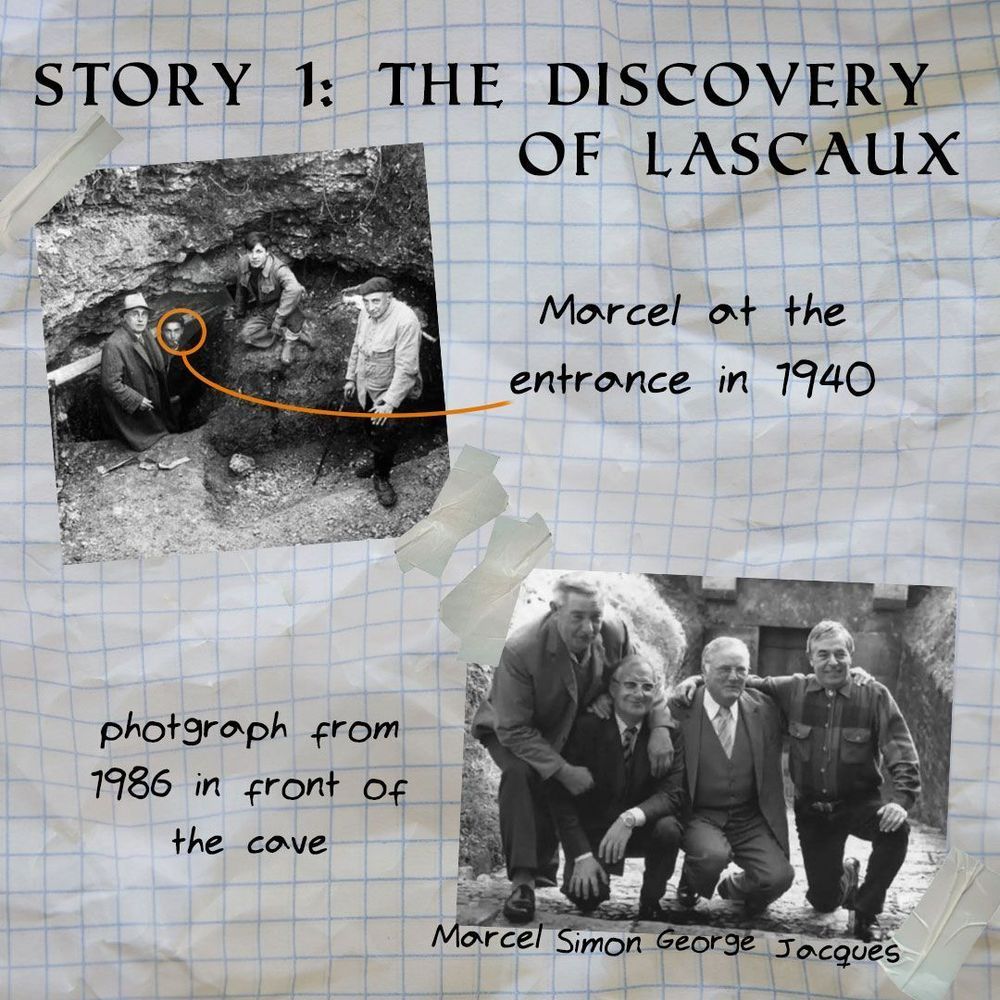
A visual story of the 1940 discovery of the Lascaux cave paintings. The top shows a black-and-white photo of four boys at the entrance of the cave, with an arrow identifying Marcel. Below, a photo from 1986 shows the now-adult discoverers—Marcel, Simon, George, and Jacques—posing in front of the cave entrance. The background is gridded paper with handwritten-style annotations, evoking a personal archive or memory book.
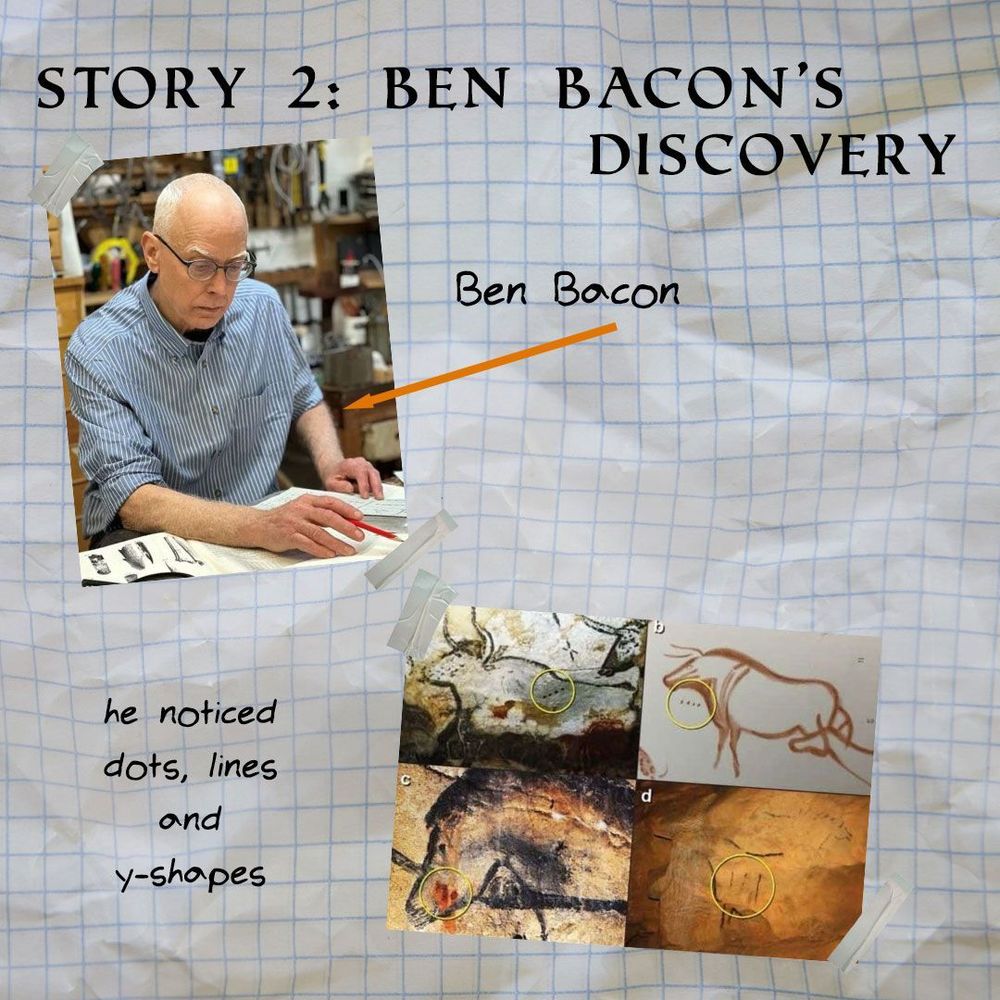
A collage introducing Ben Bacon’s research on Paleolithic cave art. At the top left, a photo shows Bacon, an older man in a striped shirt and glasses, studying drawings at a table. Below him, four cropped images of cave paintings are highlighted with circles, showing dots, lines, and Y-shaped marks near animal figures. Text on the background reads “Story 2: Ben Bacon’s Discovery” and “he noticed dots, lines and y-shapes,” illustrating his observations. The layout is on crumpled grid paper, with digital tape adding a scrapbook feel.
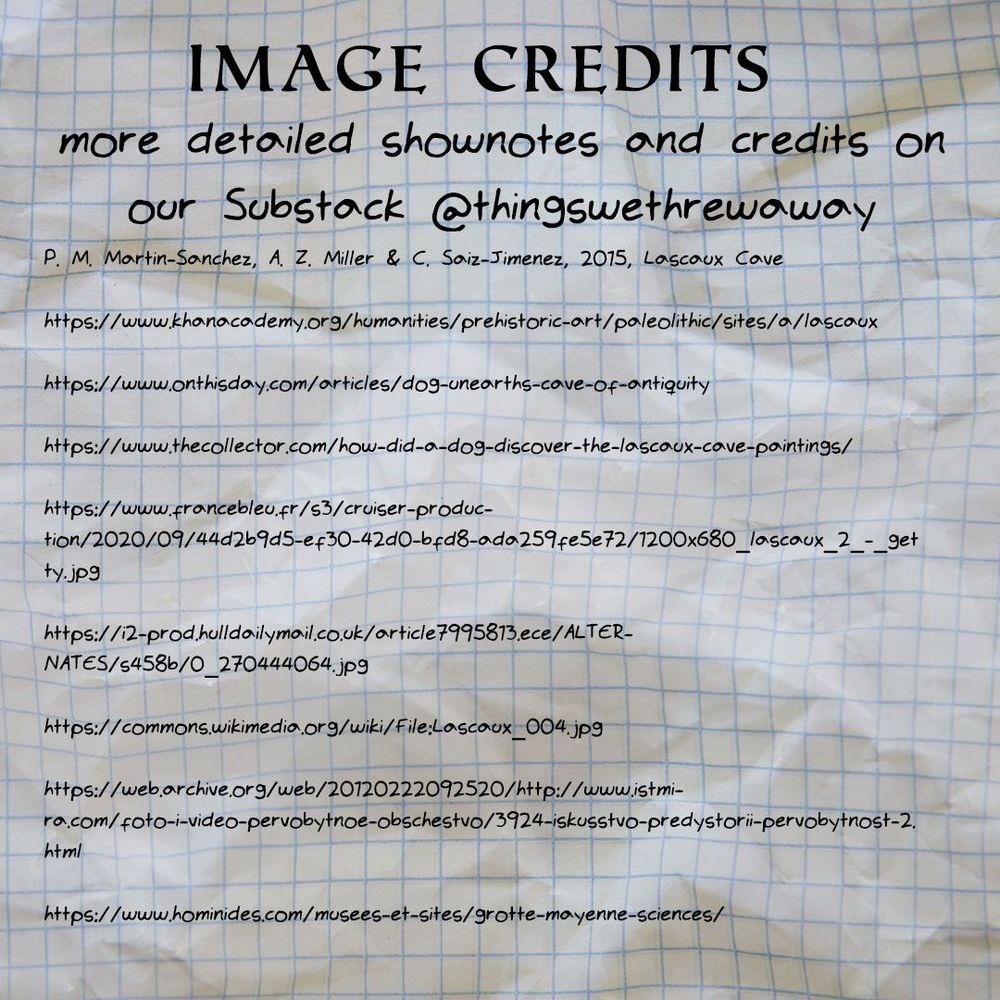
the credits to the images used in this carrousel collage (throughout all 4 collages)
🎙️ Episode 1 - The ArchaeoEnthusiasts!
In this episode, we first look at the definition of archaeology and the dive into the role of amateur archaeologists in helping our understanding of the past. Furthermore, we introduce archaeology journaling!
Listen on Substack buff.ly/CVArM73
07.08.2025 10:01 — 👍 3 🔁 1 💬 0 📌 0
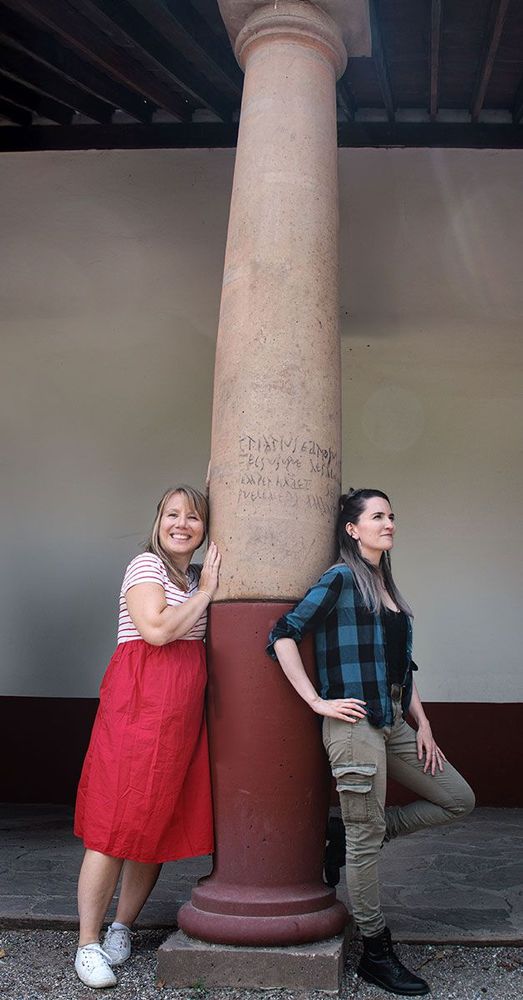
Welcome to Things We Threw Away!
We are Jona & Stefanie, two archaeologists & we had the idea to create a podcast, we are ready to share this news with you.
We'll take a look at an object and the journey it's been on, following its path through time with research and archaeology journaling.
31.07.2025 14:28 — 👍 8 🔁 1 💬 0 📌 0
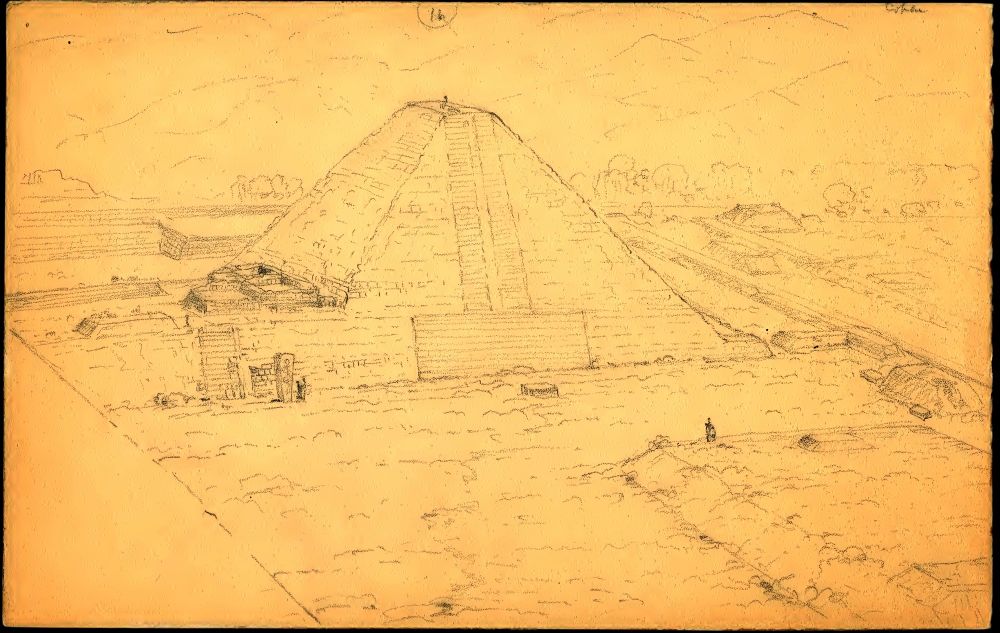
Pencil sketch of temple pyramid & site layout on yellowed paper
Archaeologist William Henry Holmes' field sketch of the #Maya archaeological site of Copan in western Honduras (Holmes 1916, Vol. 1). #Archaeology
21.06.2025 19:15 — 👍 18 🔁 2 💬 3 📌 0
No, also not with the past forward social startup in the Netherlands connecting archaeologists and young people.
The name is great, quite archaeological and will probably be still used by many other projects and organisations
23.06.2025 10:11 — 👍 1 🔁 0 💬 0 📌 0
Are you an archaeologist working as a freelancer or in academia or are you early in your career?
Maybe this community is something for you, so help us build it and fill out the survey
21.06.2025 12:20 — 👍 3 🔁 0 💬 1 📌 0

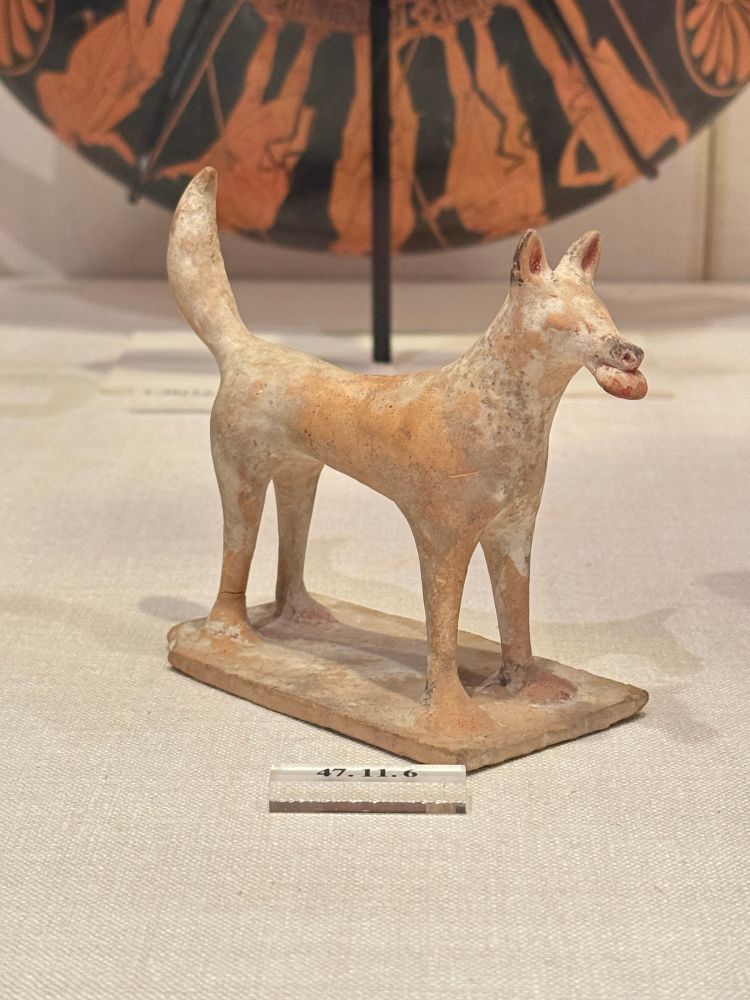
Watercolor illustration of a terracotta dog figurine from Boeotia, Greece dating back to around 500 BCE. A simple figurine and yet it evokes all the character of a very happy dog that has found a prized piece of meat.
#watercolorpainting #archaeology #history #artifact #dogart #dog #hound #ancient
05.05.2025 02:49 — 👍 12 🔁 2 💬 0 📌 1
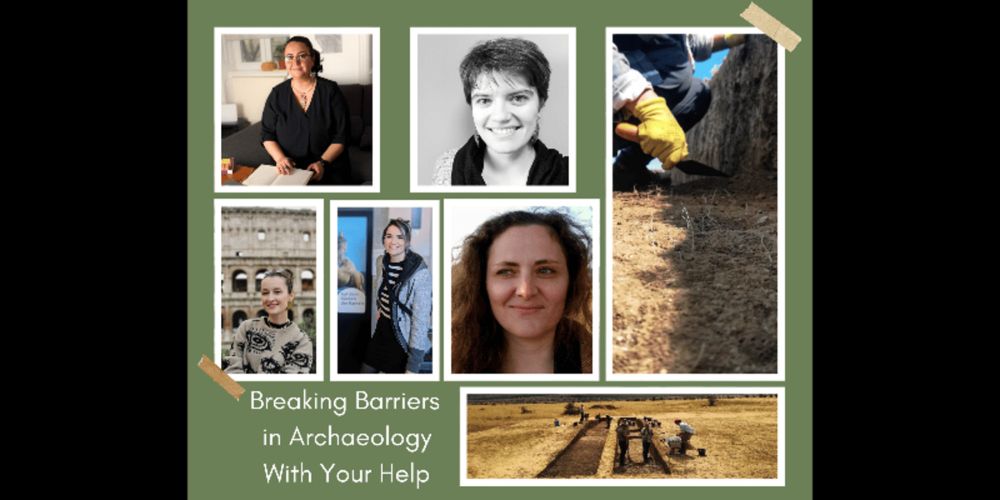
Fundraising Laura Coltofean | Breaking Barriers in Archaeology—With Yo
Fundraising
Grateful to be among those supported by Laura Coltofean & @ilovearchaeology.bsky.social fundraiser for a much-needed EAA 2025 workshop on alternative careers in archaeology. Freelancers sharing real experience—finally on the main stage. Support if you can whydonate.com/en/fundraisi...
21.04.2025 23:37 — 👍 3 🔁 1 💬 0 📌 0
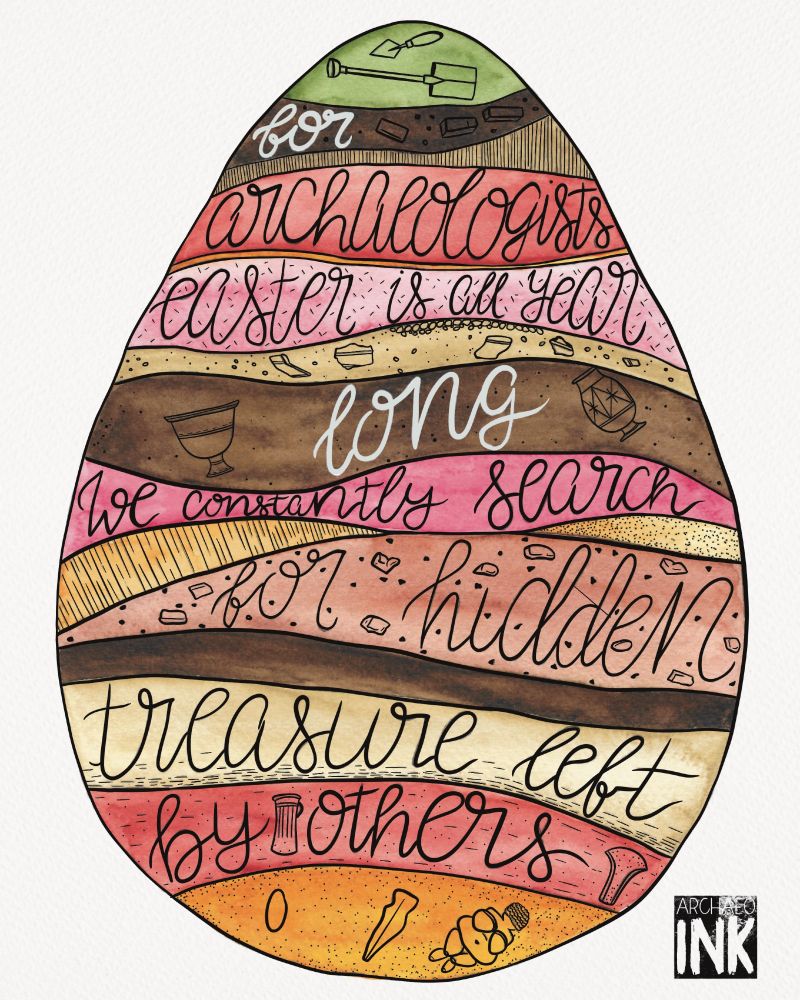
Hand-drawn Easter egg split in half, revealing archaeological layers inside. The layers include soil, pottery shards, a tiny brush, a trowel, and a steaming coffee cup. The egg rests on a simple background, blending festive imagery with archaeological tools and symbols. Illustration done by Jona Schlegel from archaeoINK
This drawing is a redoing on an older one and feels like a good starting point again, and though it is not coming from a trench, it still got all the right layers.
Happy Easter from my digital studio to you!
21.04.2025 23:32 — 👍 7 🔁 1 💬 0 📌 0
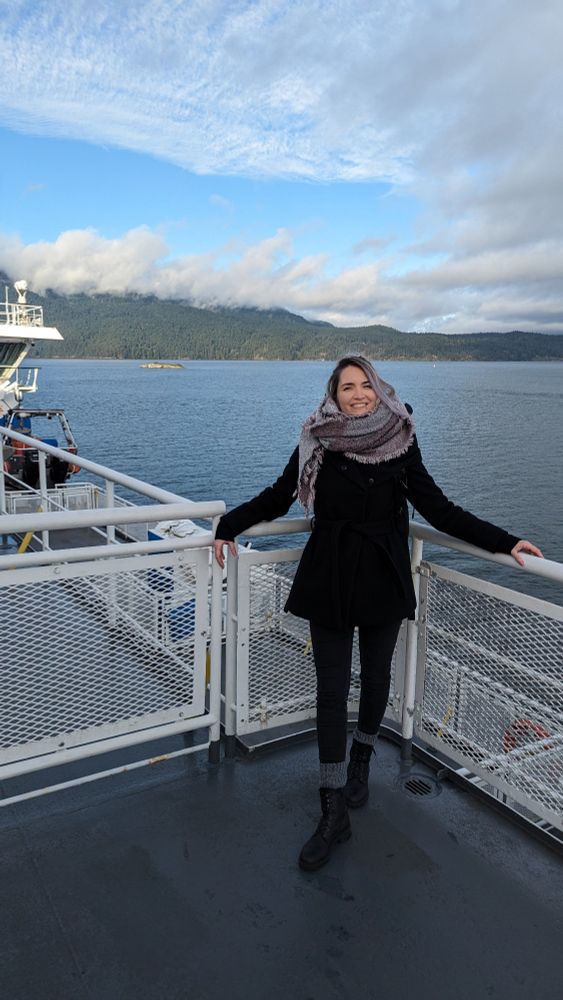
Jona, a woman stands smiling on the deck of a ferry on the way to Victoria BC, wrapped in a scarf and black coat. Behind her, calm waters stretch out toward forested mountains under a blue sky with wispy clouds. The atmosphere is crisp and bright, suggesting a winter or early spring day.
In Victoria and Vancouver for a bit. If you work in archaeology, heritage, or science communication and fancy a coffee or chat—let me know.
Always happy to connect with others while I’m in the area.
19.04.2025 05:25 — 👍 11 🔁 0 💬 0 📌 0
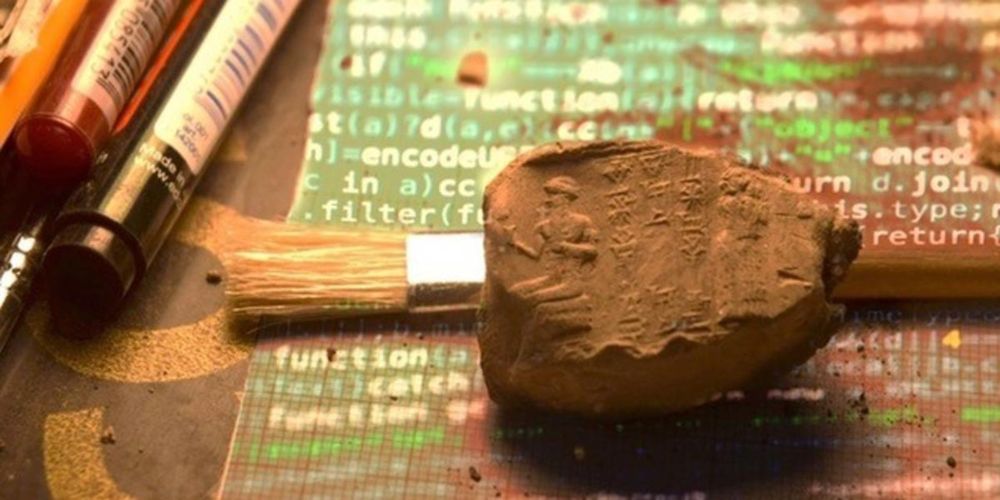
Providing digital access to the imagery of the ancient Near East
As part of a new inter-academic project, thousands of seals from the fourth to the first millennium BC are now being captured and annotated at the Institute of Near Eastern Archaeology.
Seals & impressions form the largest visual inventory from #WestAsia in ancient times. A project to create a digital corpus of 80,000 seals & sealings from the 4th to the 1st millennium BC is launching at #LMU's Institute of Near Eastern #Archaeology.@bbaw.bsky.social @freieuniversitaet.bsky.social
18.03.2025 14:25 — 👍 13 🔁 3 💬 0 📌 0
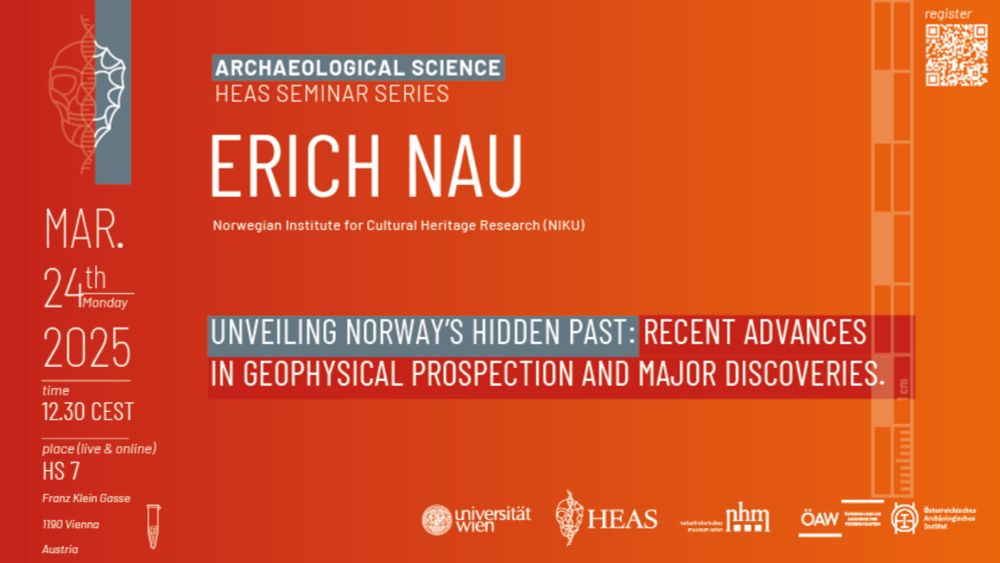
HEAS Seminar Series - Archaeological Science - HEAS
As part of the HEAS Seminar Series in Archaeological Science, Erich Nau from the Norwegian Institute for Cultural Heritage Research (NIKU) will give a talk on Unveiling Norway’s Hidden Past: Recent Ad...
We are looking forward to welcoming #ErichNau to #HEASVienna as part of the #HEASSeminar in #ArchaeologicalScience next Monday the 24th March at 12:30 CET. Registration and more information for this hybrid event is on our website 🔗👇
20.03.2025 11:57 — 👍 8 🔁 5 💬 0 📌 2
YouTube video by HEAS
HEAS Seminar Michał Pisz
The recording from the #HEASSeminar in #ArchaeologicalScience with #MichałPisz is now available on our YouTube channel 🔗👇
28.01.2025 12:23 — 👍 8 🔁 3 💬 0 📌 1
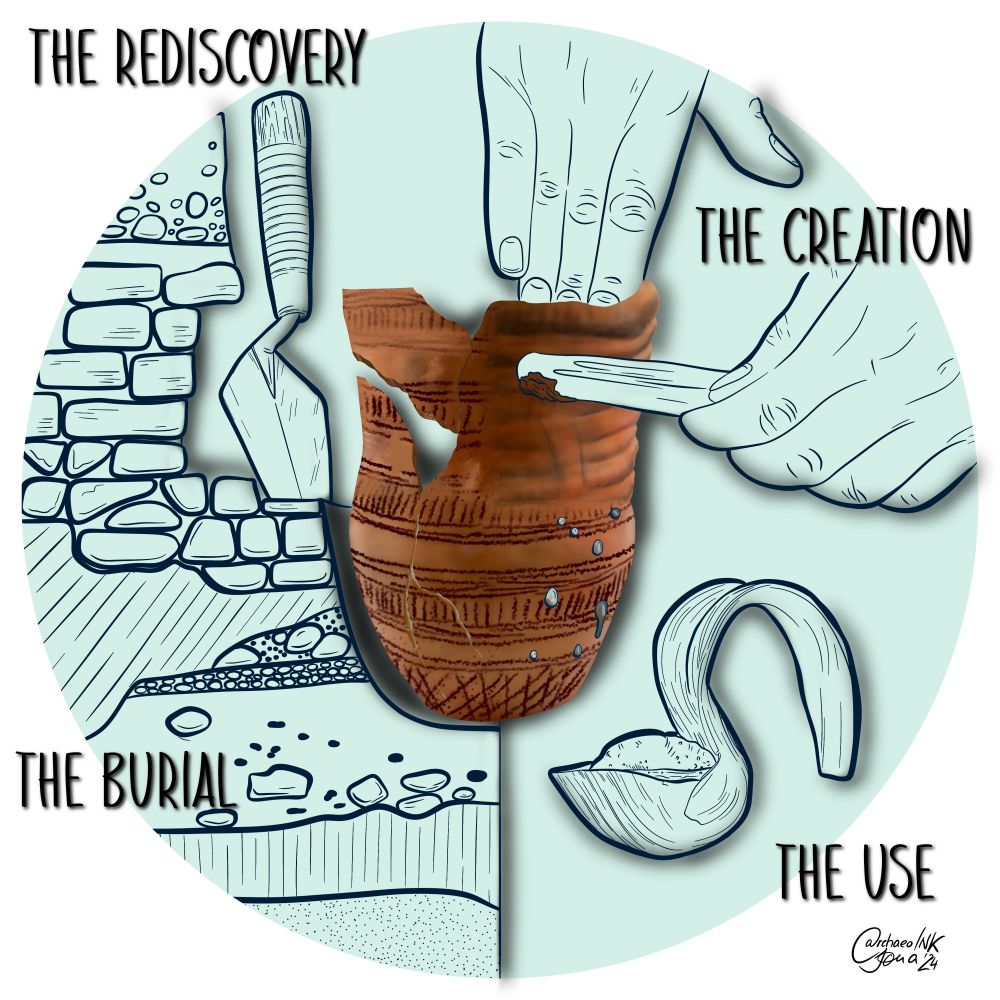
A circular illustration depicting the life cycle of a ceramic vessel. At the centre is a cracked but partially reconstructed pot, blending realistic texture with drawn elements. Around it, four phases of its life:
The Creation (top right): Hands shape the wet clay, carving decorations.
The Use (bottom right): A ladle represents the vessel’s daily function.
The Burial (bottom left): The pot rests among stones and soil, laid to rest.
The Rediscovery (top left): A trowel carefully removes soil, exposing the vessel once again.
The artwork captures how objects move through time, from human hands to the depths of the earth and back.
Signed “archaeoINK Jona ‘24” in the bottom right.
Objects carry time with them. Made, used, broken, buried, rediscovered—this pot has lived through it all.
This illustration traces that cycle, showing how objects keep moving
#Archaeology
20.03.2025 20:10 — 👍 14 🔁 1 💬 1 📌 1
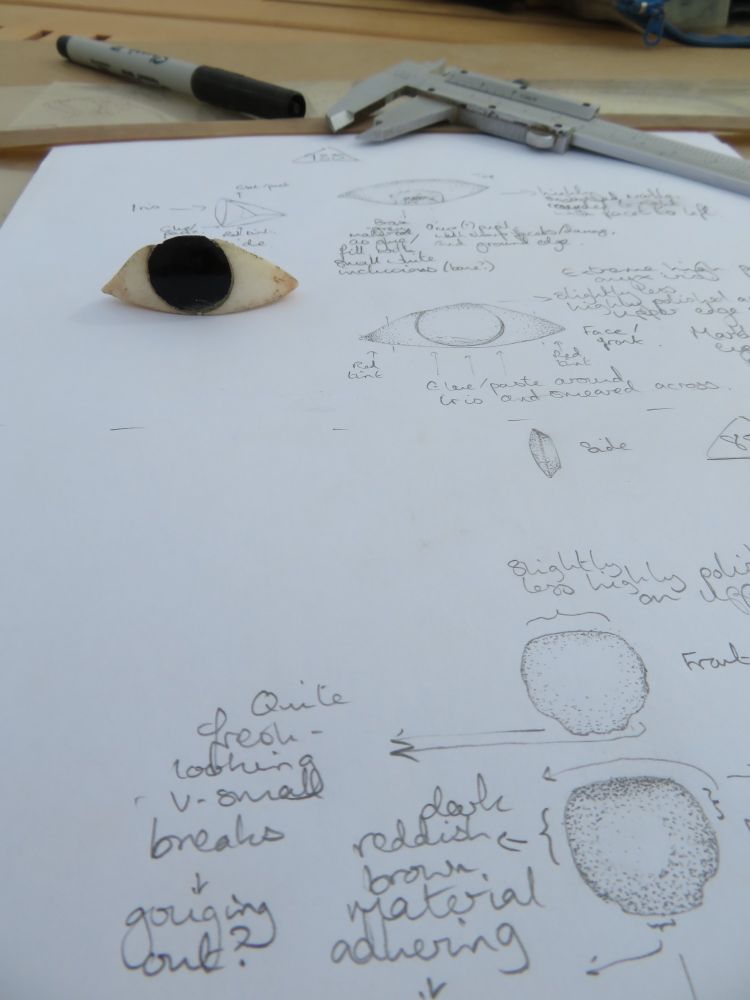
More of the eye-inlay finds illustration sheet, with the complete eye-inlay in the back ground, and the entry for the stray iris-inlay in the foreground. Front, rear-view and side-view are shown. Photo and illustrations by Xander Sable
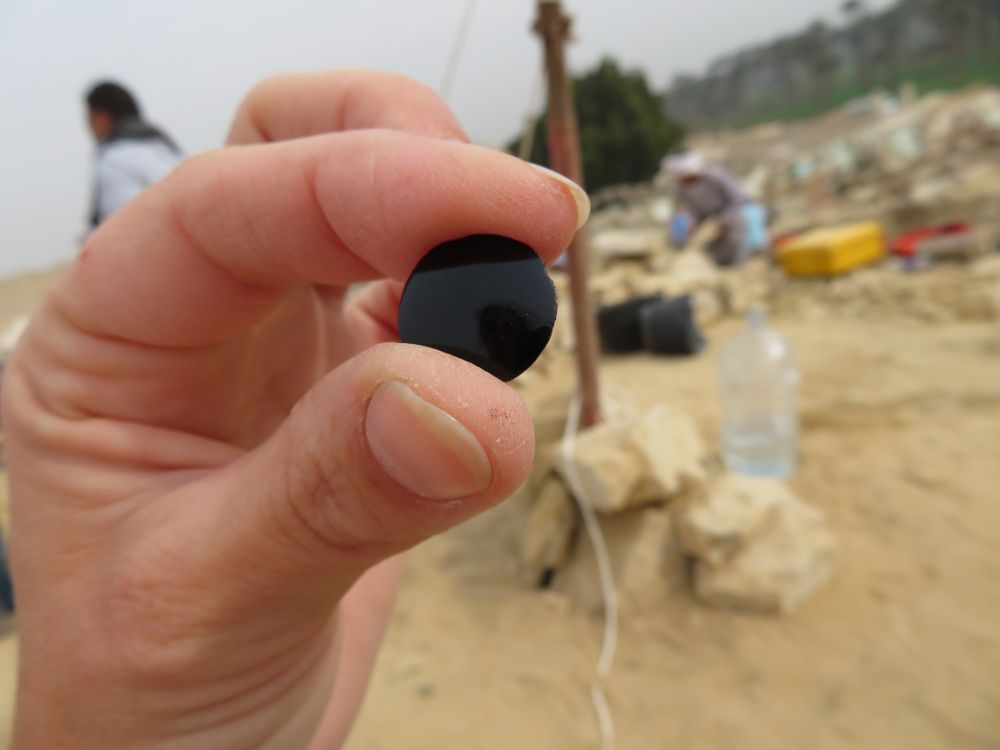
A stray iris-inlay from an Egyptian Coffin held between my finger and thumb - it is mirror shiny, and mesmerising. Egyptian archaeological workers, a modern cemetery and date groves are in the background. Photo by Xander Sable
It was glued very firmly, and the fit of iris to socket was excellent, with maybe only 1/3mm glue showing. The stray iris (vaguely remember it was too small to pair the complete eye) was carefully faceted to the rear for a solid, bondable fit, but appeared from chipped edges to have been 3/
14.03.2025 19:27 — 👍 32 🔁 3 💬 1 📌 0
The article and generally the PURE3D project are working on pushing 3D heritage forward. The online tool, Voyager Story, it’s not just about displaying models—it’s about embedding research and storytelling into them.
A great example of interactive archaeology and the article is a good read as well!
20.03.2025 19:57 — 👍 1 🔁 0 💬 0 📌 0
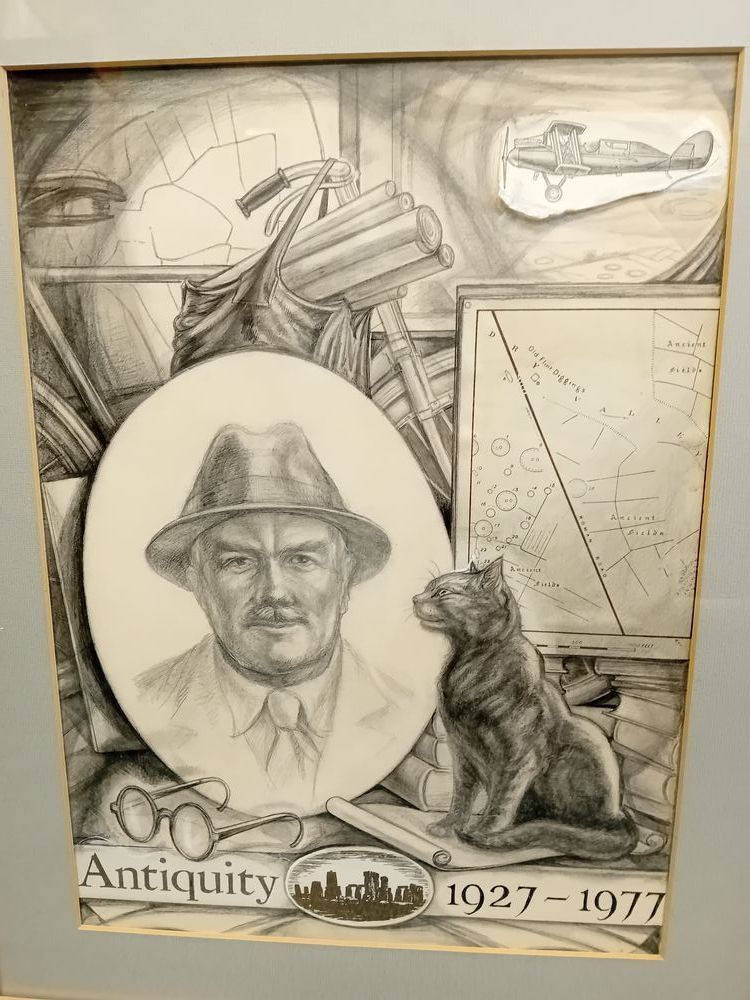
Illustration of a desk covered in papers, with a mirror reflecting a man in a suit and hat. A cat sits next to the mirror, alongside a map of earthworks and a plane with a propellor. Text at the bottom reads 'Antiquity 1927-1977'.
Can you guess which cat-lover features in this wonderful artwork, produced to celebrate our 50th anniversary in 1977?
Here's a hint: as well as being a cat fan, they were also a pioneer of aerial photography for #archaeology! 🏺 ArchaeologyThreads
18.03.2025 10:22 — 👍 14 🔁 3 💬 5 📌 4
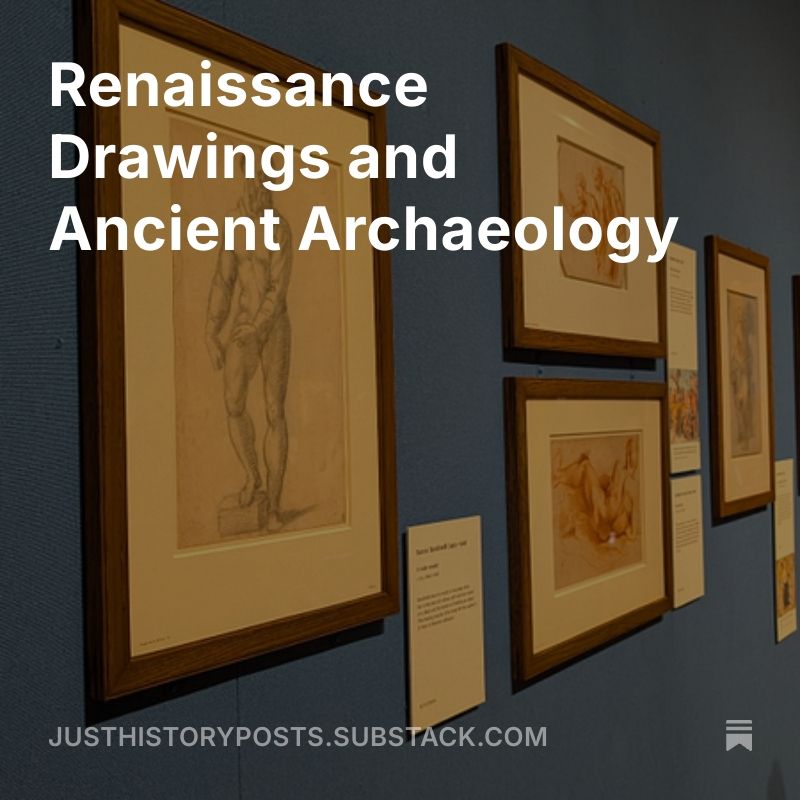
A photograph of Renaissance drawings in frames on a blue wall, with information plaques alongside them. Over the top of the photograph is text: "Renaissance Drawings and Ancient Archaeology. Justhistoryposts.substack.com"
New newsletter is live!
Today I chat about the Drawing the Italian Renaissance exhibition at Buckingham Palace, recount my latest blog post about Duchess Dhuoda and her instruction manual, and cover some great historical news!
justhistoryposts.substack.com/p/renaissanc... #history
15.03.2025 19:15 — 👍 5 🔁 4 💬 0 📌 0
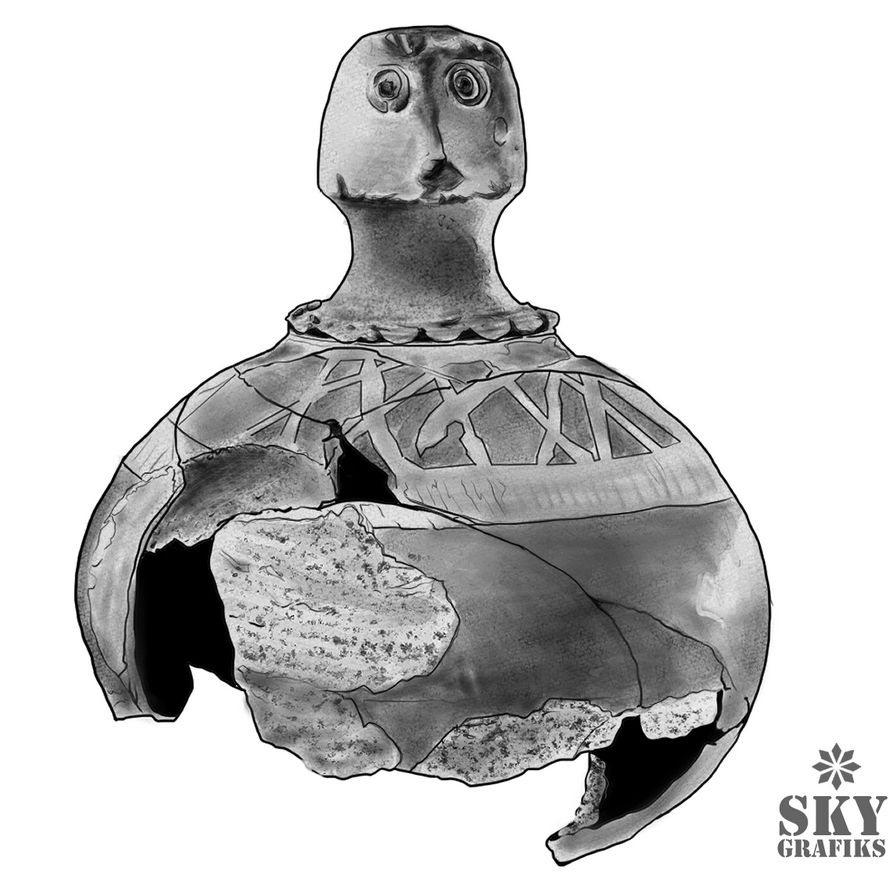
Drawing/Documentation ✏️🎨
#archaeologicalIllustrations #drawing #archaeology #ancienthistory #history #civilization #researcher #oldcivilizations #kunst #zeichnung
16.03.2025 11:14 — 👍 7 🔁 1 💬 0 📌 0
Very proud to have produced this new reconstruction painting of Flagstones Enclosure in Dorchester, Dorset. Congratulations to Dr Susan Greaney @suegreaney.bsky.social and all of the project teams who contributed to this fascinating research.
#neolithic #archaeology #reconstruction #illustration
06.03.2025 20:51 — 👍 35 🔁 8 💬 2 📌 0

An image of Ms. Casey from the Apple TV+ series Severance
Your outie has a favourite excavation trowel and secretly believes it’s lucky.
Your outie can’t help mentally scanning every field they pass for cropmarks.
Your outie once got lost in a Harris Matrix.
Your outie has a folder of archaeological site plans they just find aesthetically pleasing.
12.03.2025 16:27 — 👍 2 🔁 0 💬 0 📌 0
Research from our academics reveals that Flagstones in Dorset dates to 3,200 years BC - approximately two centuries earlier than previously thought - and sheds new light on the origins of monumental architecture during the Neolithic period, includign Stonehenge.
10.03.2025 10:49 — 👍 11 🔁 2 💬 0 📌 1

Intrepid Women
Due for publication 8th March 2025 Introducing the extraordinary women who broke through the proverbial glass ceiling to carry out revolutionary field research in distant parts of the world ‘unsuitabl...
📣 Out now! 'Intrepid Women'
This fascinating book explores the lives and work of several pioneering women who undertook revolutionary anthropological field research around the world.
More info: bodleianshop.co.uk/products/int... #IWD @pittriversmuseum.bsky.social @bodleianlibraries.bsky.social
10.03.2025 11:06 — 👍 8 🔁 3 💬 0 📌 1

A digitally illustrated pattern featuring various female figurines from different archaeological periods, drawn in shades of pink, purple, beige, and black. The figurines include representations of the Venus of Willendorf, Cycladic figures, and other ancient sculptures, surrounded by small green leaves. In the center, bold black text reads 'HAPPY INTERNATIONAL WOMEN'S DAY,' standing out against the intricate background. The artwork celebrates historical depictions of women and their cultural significance.
Today is a reminder, not an exception. Women have always created, discovered, and shaped the world around us.
Happy Women's Day!
08.03.2025 21:18 — 👍 3 🔁 0 💬 0 📌 0
Sherds meet sketches. From fragments to full form
And Bellarmine jugs still pulling faces after centuries
05.03.2025 09:27 — 👍 7 🔁 0 💬 1 📌 0
This is brilliant! A solid example of how illustration in archaeology isn’t just about recording—it’s about showing movement and interpretation too. The graphite adds texture and flow, while the blue highlights guides without overpowering the drawing.
Really inspiring work!
05.03.2025 09:16 — 👍 9 🔁 3 💬 1 📌 0
![Riverside homes: The illustration shows what the Must Farm [UK] settlement might have looked like during its brief habitation in the ninth century B.C., before its destruction by fire. Because of partial demolition of the site by quarrying in the 1960s, it is not known how many dwellings the palisade originally contained. Construction required a huge amount of timber, mainly oak and ash. Scholars believe that the Must Farm community was one of many and that these raised structures were an established local custom. Archaeologists believe more such sites may lie hidden under the fenland clay. Illustration by Santi Pérez.
For more information visit: https://www.nationalgeographic.com/premium/article/must-farm-england-bronze-age-artifacts](https://cdn.bsky.app/img/feed_thumbnail/plain/did:plc:7rfibfme76bv4ohbni2ho5pj/bafkreihwgmtw2vkfqq5jhjmhkwgy255q7ffuok5khypp3ezjlgyocbbehu@jpeg)
Riverside homes: The illustration shows what the Must Farm [UK] settlement might have looked like during its brief habitation in the ninth century B.C., before its destruction by fire. Because of partial demolition of the site by quarrying in the 1960s, it is not known how many dwellings the palisade originally contained. Construction required a huge amount of timber, mainly oak and ash. Scholars believe that the Must Farm community was one of many and that these raised structures were an established local custom. Archaeologists believe more such sites may lie hidden under the fenland clay. Illustration by Santi Pérez.
For more information visit: https://www.nationalgeographic.com/premium/article/must-farm-england-bronze-age-artifacts
Looking for more good content on the #Fediverse? Find other #Shovelbums with the #Academics of Mastodon #Archaeology List 🏺
https://stark1tty.github.io/Mastodon-Archaeology/
An extensive list of more #academic disciplines here […]
[Original post on fediscience.org]
02.03.2025 00:44 — 👍 5 🔁 4 💬 0 📌 0
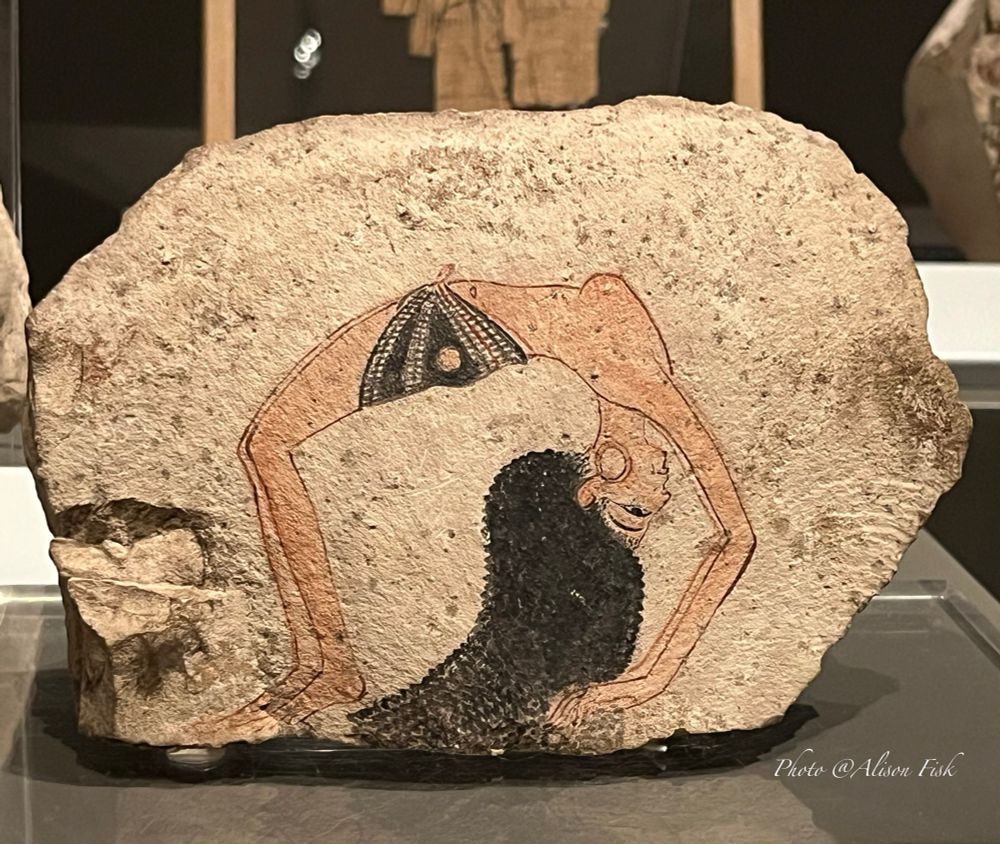
My photo shows a limestone fragment measuring 17 cm x 11.5 cm x 4 cm with a painting of a female dancer shown in profile performing an acrobatic back bend, a so-called ‘crab’ position. The girl has long wavy/crimped black hair which falls down to the ground. She is wearing large gold circular earrings and a black kilt with a decorative red and white pattern which is tied at the front around her hips.
This limestone fragment comes from the Workers Village of Deir el-Medina which housed the artisans who worked on the royal tombs in the Valley of the Kings. Artists used ostraca (flakes of limestone and broken pottery pieces) as sketch and note pads for practice drawings, sketching, writing poetry etc.etc. Thousands of ostraca have been found at Deir-el Medina.
Artist’s painting of an acrobatic dancer, c. 1292 - 1077 BC.
Away from the constraints of formal tomb art, an ancient Egyptian artist chose to spend their free time painting this beautiful image on a limestone flake.
From the Workers Village of Deir el-Medina. Museo Egizio Turin 📷 me
#Archaeology
28.02.2025 14:06 — 👍 364 🔁 78 💬 11 📌 4
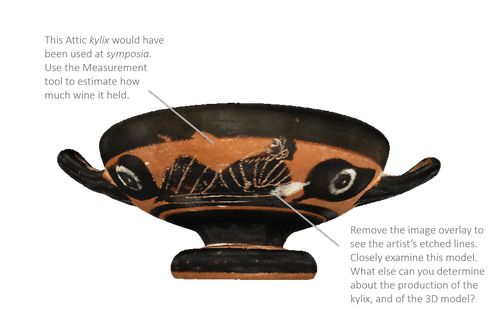
Figure 7 from the manuscript: Example of 3D modelled kylix used in digital OBL activity.
1/3 New recommendation: Keep, T. J., Robinson, M. G. P., Shoobert, J. & Birkett-Rees, J. (2025). An Australian Overview: The Creation and Use of 3D Models in Australian Universities. v2 peer-reviewed and recommended by PCI Archaeology
doi.org/10.5281/zeno... #Archaeology 🧪🏺
03.03.2025 08:02 — 👍 7 🔁 3 💬 1 📌 0
🇺🇦slava ukraini
🕵🏻♀️ Archäologin
🎨 selbständige Illustratorin
🧠chronische Migräne 🥕plant powered 🌳Landei 🌈queer 🐾niemals ohne Hund
www.ak-illustration.de
Sei klug und halte dich an Wunder
Provenance is not a region in France
Follow us also on Instagram @twtapodcast and on Substack @thingswethrewaway for more!
The podcast is available on Spotify, Apple Podcast and Substack.
Archaeologist doing ecology of the past. Fieldwork in Australia, Mongolia, the American Southwest, and sometimes France.
Associate Prof of social-environmental modeling at USU, Fellow at Santa Fe Institute, two Ph.D.s, archaeoecology, endless swagger
The combined research labs of Drs. Jacob and Isabelle Holland-Lulewicz at Penn State Anthropology. The Spatial Archaeology and Historical Network Dynamics Lab (SAHND) and the Laboratory for Socioecological Histories of Estuarine Landscapes (SHEL)
RAAP onderzoeks-en adviesbureau | thuis in archeologie, cultuurhistorie en erfgoedzorg | werkzaam in heel Nederland en België
www.raap.nl
Een positief kritische kijk op de archeologie in Nederland en daarbuiten van @gabormooij.bsky.social. Foto's, meldingen en verslagen zijn meer dan welkom.😊👍
Female gladiator reenactor and independent researcher on everything gladiatorial. Speak German, English, Dutch, and a bit of French, Spanish, Italian
Find my written work on https://independent.academia.edu/MedusaGladiatrix
#gladiators #gladiatoren #ancie
A medieval art historian & archaeologist @ Rijksmuseum van Oudheden Leiden, Dr, FSA, loves Rome & Roma, birds & books, proprietor of the Rose & Parrot 📚 🦤
"History is an illusion caused by the passing of time" (Douglas AdAms)
Archaeologist, father and husband, Running 4 Climate, Archaeologists 4 Future: Paris is still far, history and culture lover
A tag for creatives on the hunt for work!
4x/year on the second Tuesday of January, April, July, & October.
Run by @audreygonzalez.bsky.social
We are the Dutch national centre of expertise for research software.
Associate professor User-Centric Data Science at Vrije Universiteit Amsterdam. Semantic Web, Digital Humanities, Cultural AI
Onderzoeks- en onderwijsuniversiteit in Amsterdam. Meest duurzame universiteit van Nederland 2023 🌎 Unlock Your Potential. #VUamsterdam
⚓️ Astrid - she/her - 21 - 🇸🇪 - 🏳️⚧️🏳️🌈
🐚 Digital #artist
🐙 Check the Linktree ⬇️ for my other links
https://linktr.ee/bastrod
Urban Sketcher, Nurse, a few other professions
Interests from late Roman Republic, over great white sharks to mid-century modern homes
European, art supply addict, traveller close + far, interested in politics
USK Osna admin: hit me up to sketch OS + MS
I love still being alive! I love my family, friends, animals, plants, art, books, movies, museums, & food. I am here to learn & enjoy. Love is love. We have to help each other, not hate each other. She/her.🌈 🖖🌊🖼📚🌱 museo_lara on insta
No DM.
Author Illustrator, Bookish, KidLit Community, Pattern Designer. Picture Books, MG, YA, Nature Science, Environmental, Folklore & Historical Fiction. Illustration Coordinator for SCBWI Los Angeles. My portfolio website is www.IllustratedbyJessica.com
A digital magazine about everything human, told through the stories of anthropologists.
Art. History. Animals.
Stickers, decals, prints, notecards & pins on Etsy.
Kaitlin, owner and artist
http://sophiamariaandco.etsy.com













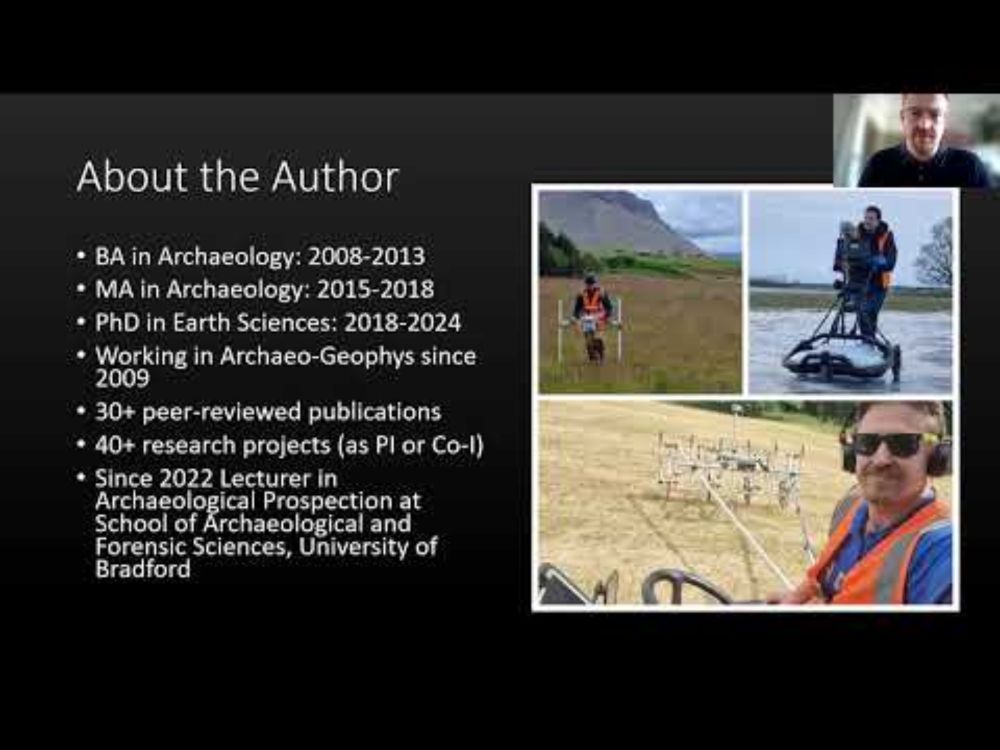







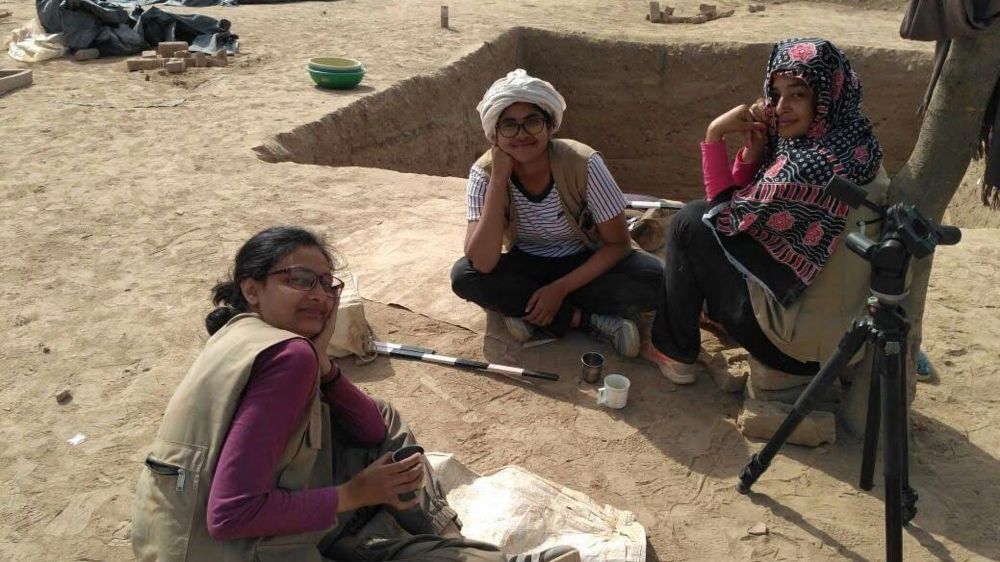


![Riverside homes: The illustration shows what the Must Farm [UK] settlement might have looked like during its brief habitation in the ninth century B.C., before its destruction by fire. Because of partial demolition of the site by quarrying in the 1960s, it is not known how many dwellings the palisade originally contained. Construction required a huge amount of timber, mainly oak and ash. Scholars believe that the Must Farm community was one of many and that these raised structures were an established local custom. Archaeologists believe more such sites may lie hidden under the fenland clay. Illustration by Santi Pérez.
For more information visit: https://www.nationalgeographic.com/premium/article/must-farm-england-bronze-age-artifacts](https://cdn.bsky.app/img/feed_thumbnail/plain/did:plc:7rfibfme76bv4ohbni2ho5pj/bafkreihwgmtw2vkfqq5jhjmhkwgy255q7ffuok5khypp3ezjlgyocbbehu@jpeg)

